Abstract
Purpose
This study was designed to clarify the osseointegration of the titanium screw coated with CMP, in regard to the time schedule, through the characteristic of early osseointegration.
Materials and Methods
Mechanical, radiological and histomophometric measurements were performed in 28 rabbit tibial proximal metaphyseal cortical bone screws 6, 12, 26 and 52 weeks after surgery for the in vivo comparison of the osseointegration of titanium screws (3.75 mm diameter, 5 mm length) with different surface treatments: CMP coating group, with the sol- gel method (experimental group) and uncoated group (control group).
Results
1. Radiology: There were no differences between the two groups without a radiolucent line or in regard to the time schedule.
2. Histology: There were no differences between the two groups without a fibrous tissue intervening surface or in regard to the time schedule.
3. Torque test: The test results for the CMP coated group were 1.5 times higher than those for the uncoated group, which was statistically meaningful, but there was no difference in regard to the time schedule.
Go to : 
REFERENCES
1). Gefen A. Optimizing the biomechanical compatibility of orthopedic screws for bone fracture fixation. Med Eng Phys. 2002; 24(5):337–347.

2). Kong YM, Kim DH, Kim HE, Heo SJ, Koak JY. Hydr oxyapatite-based composite for dental implants: An in vivo removal torque experiment. J Biomed Mater Res. 2002; 63(6):714–721.
3). Sanden B, Olerud C, Petren-Mallmin M, Larsson S. Hydroxyapatite coating improves fixation of pedicle screws. A clinical study. J Bone Joint Surg Br. 2002; 84(3):387–391.
4). Sanden B, Olerud C, Johansson C, Larsson S. I mpr oved bone-screw interface with hydroxyapatite coating: an in vivo study of loaded pedicle screws in sheep. Spine. 2001; 15:26. (24):2673–2678.
5). Takeshita F, Ayukawa Y, Iyama S, Suetsugu T, Kido MA. A histologic evaluation of retrieved hydroxyapatite-coated blade-form implants using scanning electron, light, and confocal laser scanning microscopies. J Periodontol. 1996; 67(10):1034–1040.

6). Inadome T, Hayashi K, Nakashima Y, Tsumura H, Sugioka Y. Comparison of bone-implant interface shear strength of hydroxyapatite-coated and alumina-coated metal implants. J Biomed Mater Res. 1995; 29(1):19–24.

7). Albrektsson T, Branema PI, Hanson HA, Lindstrom J. Osseointegrated titanium implants. Acta Orthop Scand. 1981; 52:155–170.
8). Johansson CG, Sennerby L, Albrektsson T. Remov al torque and histomorphometric study of bone tissue reactions to commercially pure titanium and vitallium implants. Int J Oral Maxillofac Implants. 1991; 6:437–441.
9). Kasemo B. Biocompatibility of titanium implants: surface science aspects. J Prosthet Dent. 1983; 49:823–827.

10). Giavaresi G, Fini M, Chiesa R, et al. Osseointegration of sandblasted or anodised hydrothermally-treated titanium implants: mechanical, histomorphometric and bone hard -ness measurements. Int J Artif Organs. 2002; 25(8):806–813.
11). Thomas KA, Cook SD. An evaluation of valuables influ -encing implant fixation by direct bone apposition. J Biomed Mater Res. 1985; 19:875–904.
12). Lausma J, Mattsson L, Rolander U, Kasemo B. Chemical composition and morphology of titanium surface oxide. Mater Res Soc Symp Proc. 1986; 55:351–359.
13). Hulshoff JE, Hayakawa T, van Dijk K, Leijdekkers-Govers AF, van der Waerden JP, Jansen JA. Mechani -cal and histologic evaluation of Ca-P plasma spray and magnetron sputter coated implants in trabecular bone of the goat. J Biomed Mater Res. 1997; 36.
14). Lee IS, Kim DH, Kim HE, Jung YC, Han CH. Biologi -cal performance of calcium phosphate films formed on commercially pure Ti by electron-beam evaporation. Biomaterials. 2002; 23(2):609–615.
15). Wolke JG, de Groot K, Jansen JA. In vivo dissolution behaviour of various RF magnetron sputtered Ca-P coatings. fifth world biomaterials congress, Toronto, Canada. 1996.
Go to : 
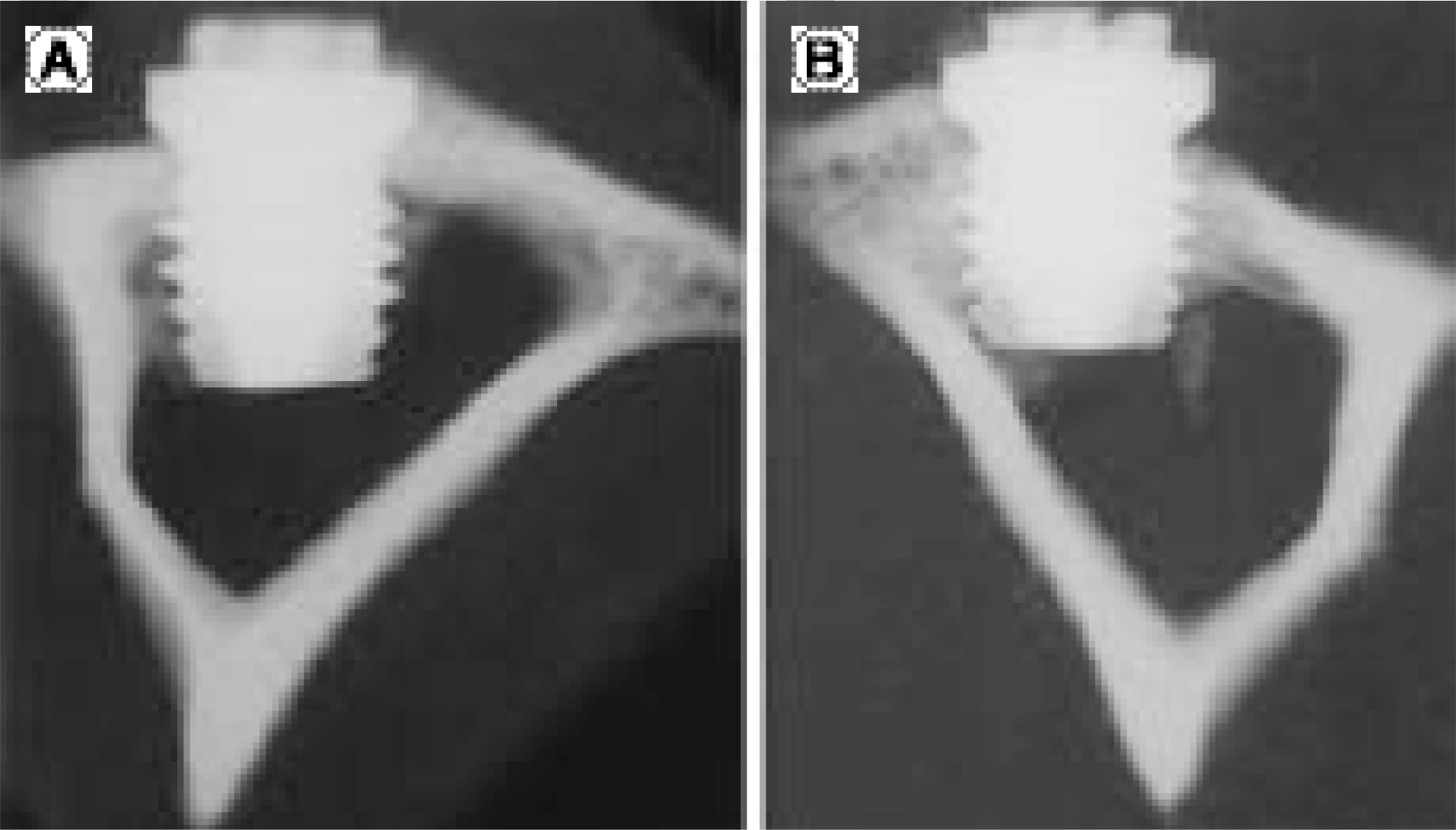 | Fig. 3.New bone formation around impanted screw on axial X-ray at 26 weeks (A) CMP coated screw, (B) uncoated |
 | Fig. 4.The CMP coated implant insertion in the tibia at 12 weeks. the implant surface shows a complete direct bone contact without intervening connective tissue. (A) × 100 magnified (B) × 400 magnified. |
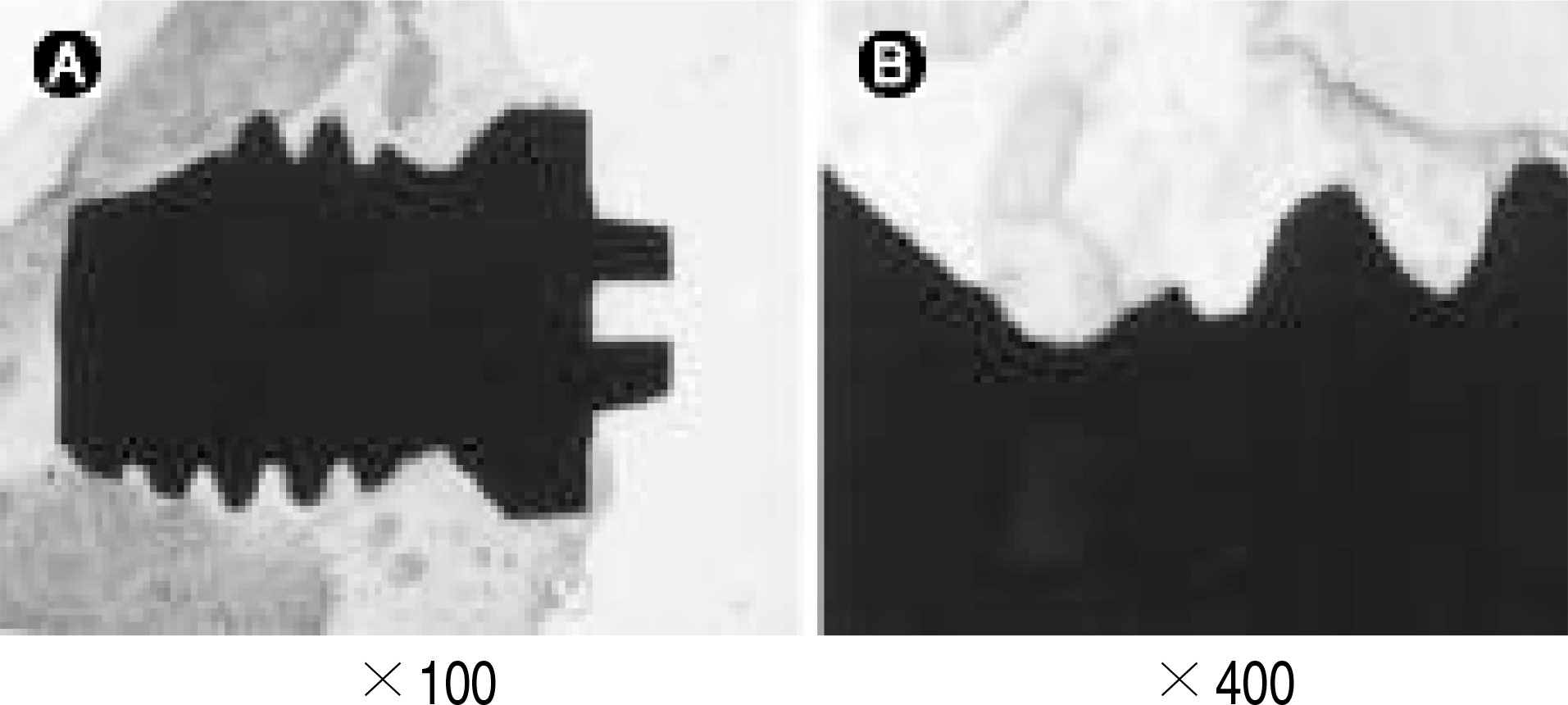 | Fig. 5.The uncoated implant insertion in the tibia at 12 weeks. the implant surface shows a complete direct bone contact without intervening connective tissue. (A) × 1 00 magnified (B) × 400 magnified. |
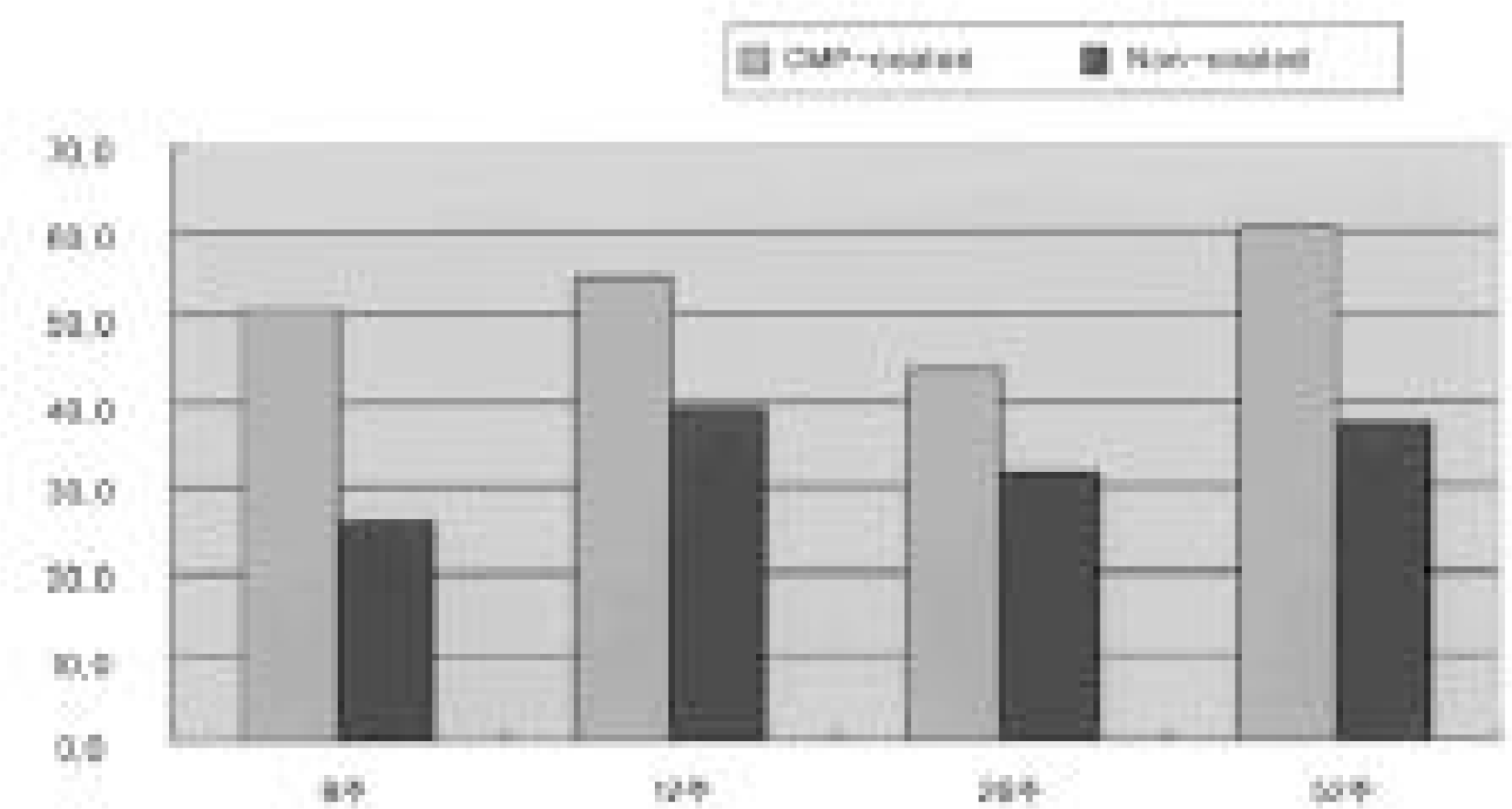 | Fig. 6.Reverse torque analysis at 6, 12, 26, 52 weeks. CMP coated group was higher than uncoated group |
Table 1.
Mean torque with relation to ceramic coating
Table 2.
Result of multiple regression-dependent variable = torque (Ncm)
| Model | Non-standardized | coefficient | Standardized coefficient | t | Sig |
|---|---|---|---|---|---|
| B | SE | beta | |||
| Constant | 77.52 | 8.16 | 9.50 | 0.00 | |
| DR∗1 | -10.49 | 6.29 | -0.27 | -1.67 | 0.10 |
| DR2 | -1.99 | 6.67 | -0.05 | -0.30 | 0.77 |
| DR3 | -11.28 | 6.29 | -0.29 | -1.79 | 0.08 |
| Coating | -19.08 | 4.56 | -0.56 | -4.18 | 0.00 |
Table 3.
Reverse torque analysis at 6, 12, 26, 52 weeks.




 PDF
PDF ePub
ePub Citation
Citation Print
Print


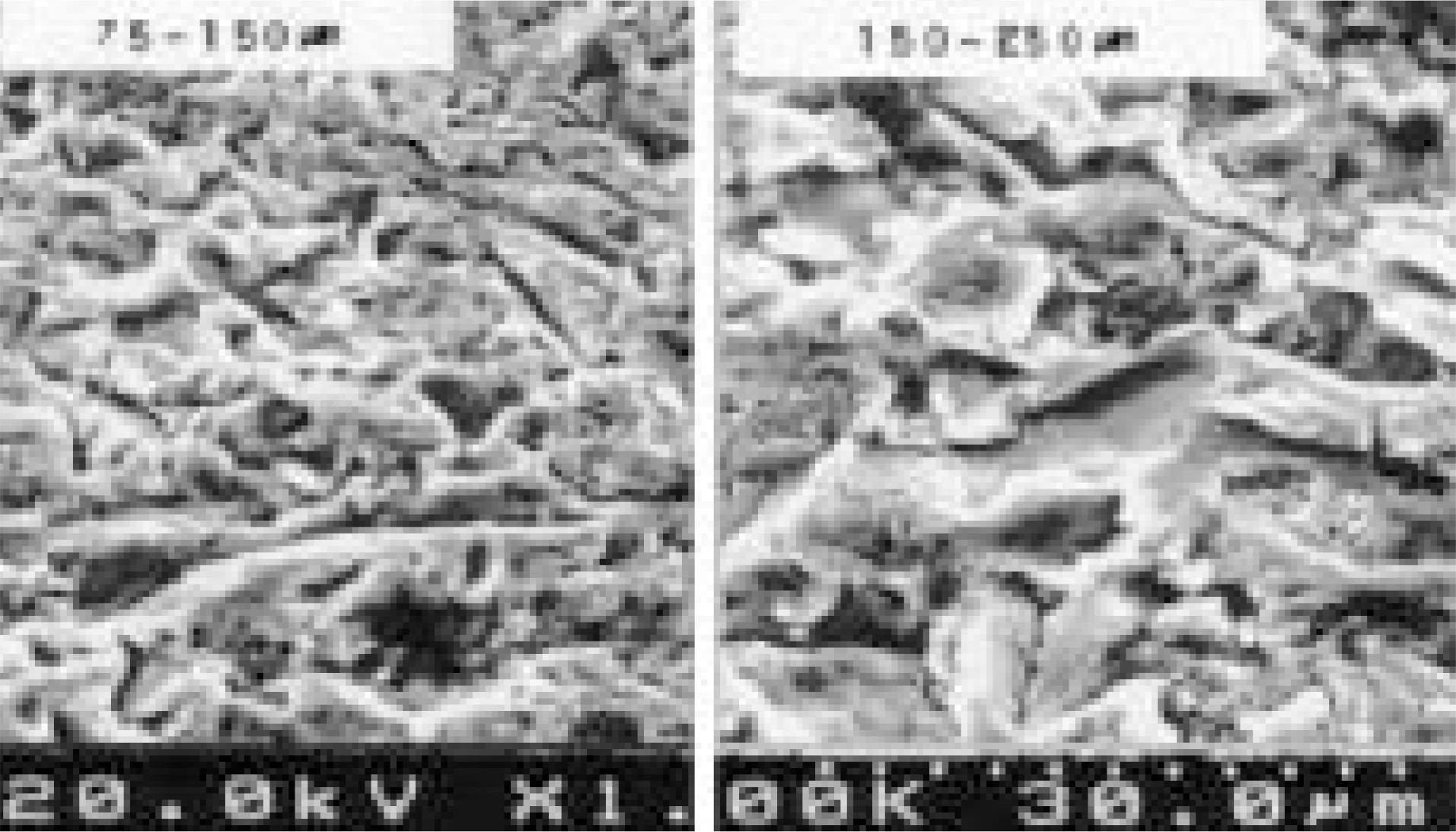
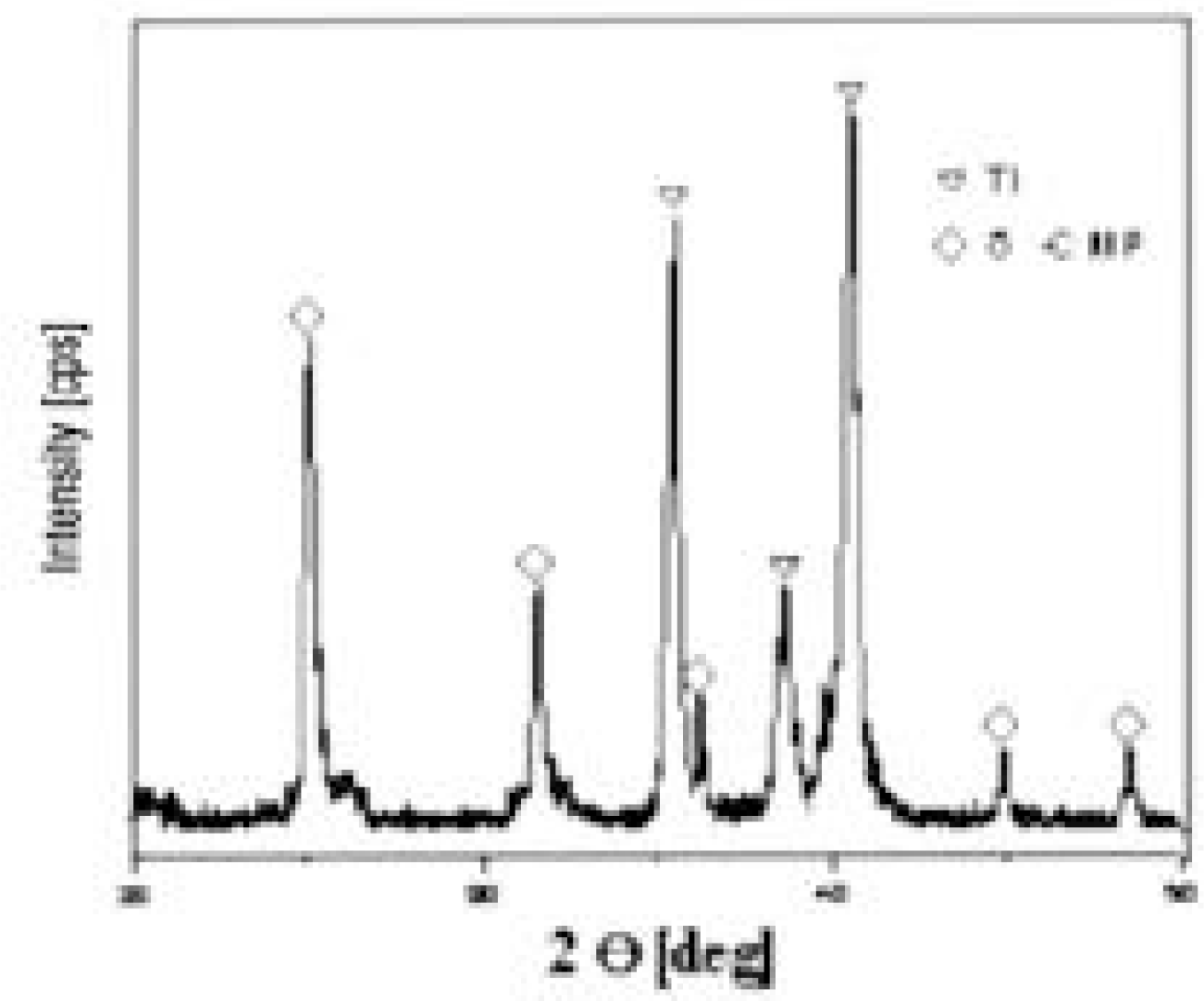
 XML Download
XML Download